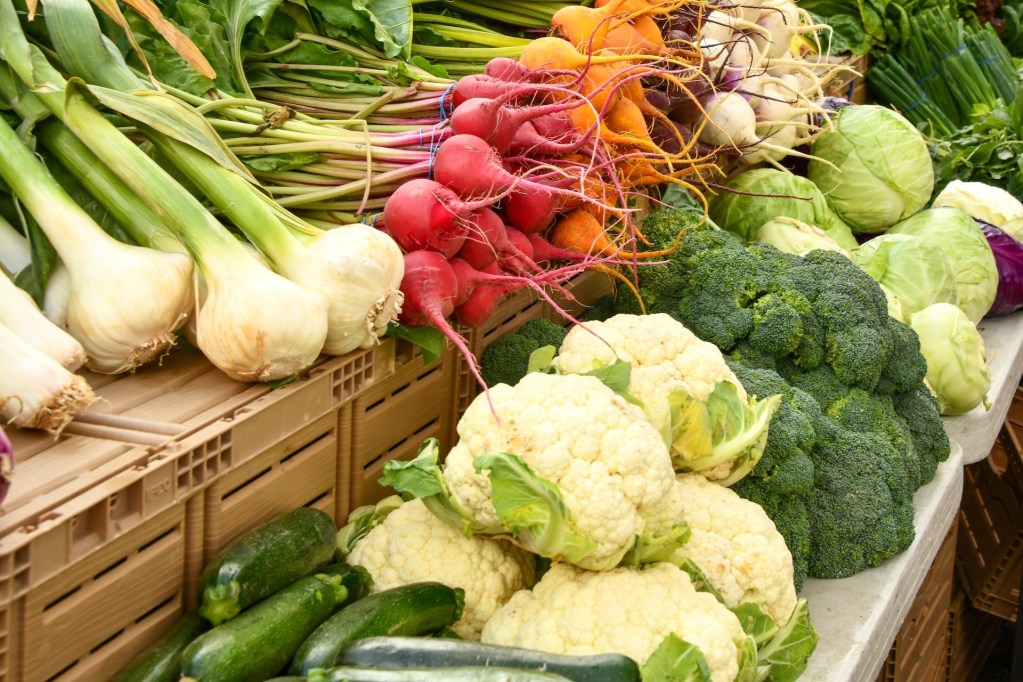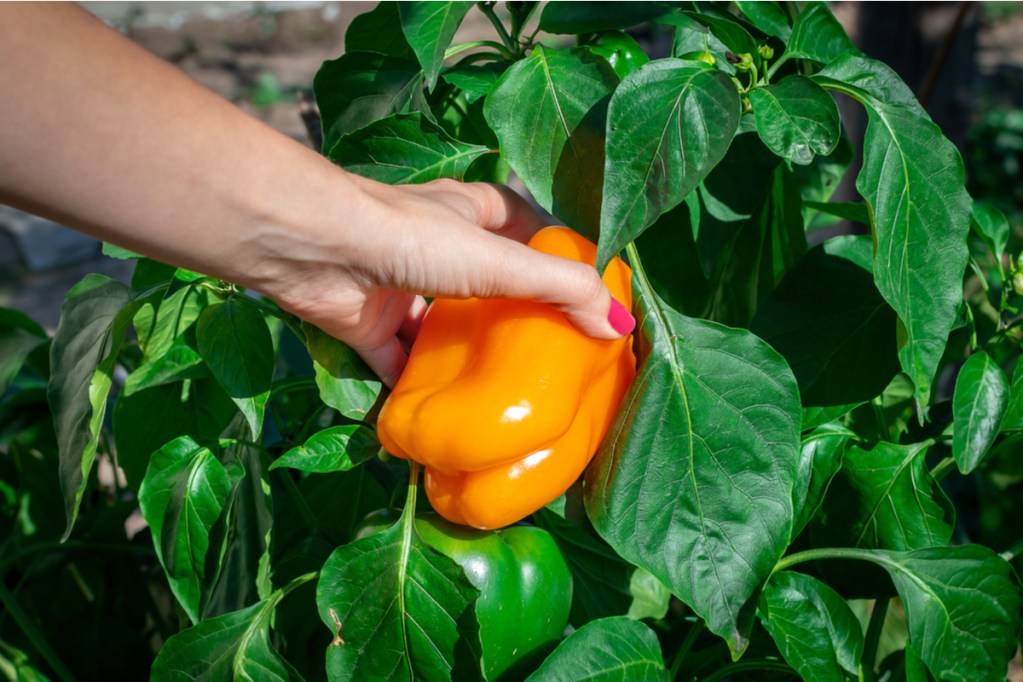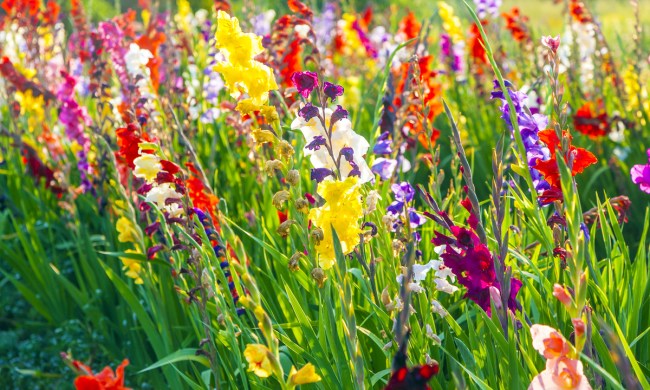Whether you prefer mild bell peppers or spicy ghost peppers, most people can agree that peppers make for a colorful, flavorful addition to meals and gardens. They aren’t difficult to grow at home, and there are so many different kinds of peppers to experiment with. While we call peppers vegetables, you may have also heard people call them fruit. You may have even heard people call them a spice! If that’s left you confused, then this is the guide for you! We’ll explain what the difference is between fruits, vegetables, and spices, which one peppers are, and how that impacts the way they’re grown and eaten.
What is a fruit?

Fruit is a botanical term for a specific part of the plant. They form from flowers, typically after the flower has been pollinated, and carry the seeds of the plant. Fruits that form without pollination will usually be seedless. There are different types of fruit, such as berries (like blueberries), drupes (like peaches), aggregate fruits (like raspberries), and multiple fruits (like pineapples).
The different kinds of fruit are distinguished by differences in their structures or in how they’re formed. However, all fruits are formed from the flowers of the plant, making them fairly easy to identify. This is good news if you’re dealing with an unfamiliar plant. As long as you know that what you’re looking for is a fruit, you have a good idea of which part of the plant to look at.
Not everything that is a fruit is called a fruit, though. Tomatoes, eggplants, avocados, and cucumbers are all fruits. In fact, they’re all berries! But even though they’re fruits, they are primarily referred to as vegetables. This is because they aren’t as sweet as other fruits.
What is a vegetable?

While a fruit is identified by how it forms, vegetables are identified by how we use them. The only hard and fast rule about vegetables is that they must be edible. The entire plant doesn’t have to be edible, but the part in question does. Vegetables are also typically more savory and less sweet and are often eaten with a protein. These last two points are especially important when it comes to identifying fruits that are also vegetables.
The thing that makes fruits like tomatoes, eggplants, avocados, and cucumbers different from apples, pears, and oranges isn’t how they form, but the ways we eat them. On the other hand, vegetables that aren’t fruit, such as celery, potatoes, and onions, are vegetables primarily because they are edible. We also tend to eat these vegetables in savory meals and with protein, but this is less important. They would be vegetables even if we didn’t eat them this way because there isn’t really anything else they could be.
What are peppers?

Peppers are both fruits and vegetables. They grow from the flowers of plants in the Capsicum genus, forming once the flower has been pollinated. In the center of the pepper plant are the seeds, which are sometimes removed before cooking, but not always. The way they grow marks peppers as a colorful fruit, specifically a berry. All peppers are fruits, as well. Although they come in a range of different colors, tastes, and heat levels, they’re all peppers. Even black pepper, which isn’t actually related to other peppers, is the dried and ground fruit of the plant Piper nigrum.
Peppers are also vegetables, for the most part. Bell peppers, chili peppers, banana peppers, and all the other similar peppers are vegetables. They can be eaten cooked or raw, with or without seeds, and are much more savory than they are sweet.
Are peppers a spice?

Now that you know if peppers are a fruit or a vegetable, you might be wondering if they are a spice. The answer lies in how we define spices. Spices are parts of vegetables, usually ones with strong smells or flavors, that have been dried and sometimes crushed. They can be made from the seeds, fruit, leaves, or even bark of plants, and that includes peppers.
So while peppers are not themselves spices, they can become a spice if they are dried. If you’ve ever added red pepper flakes or a chili powder to your food, then you’re already familiar with spices made from peppers! However, most peppers are used both as vegetables and as spices. The exception to this is black pepper, which is not actually related to other peppers. Black pepper is primarily used as a spice.
Why does it matter?

It can be very helpful to know how plants grow and how they’re used. In this case, knowing that peppers are both fruits and vegetables tells you quite a bit about them. It tells you that peppers grow from the flowers of the plant, so you know to keep an eye on your pepper plant once it blooms and to avoid using any pesticides that harm pollinators. However, since it’s also a vegetable you know that peppers aren’t as sweet and juicy as other berries.
Although you can eat them just like you would an apple, you won’t be getting the best pepper experience. Additionally, while some fruits will ripen after being harvested, other parts of the plant typically will not continue growing after harvest. So while a pepper can be harvested before it is fully ripe, you should avoid harvested plants that are strictly vegetables before they’re ready.
Is paprika a fruit or a vegetable?

In case you weren’t aware, paprika is actually made from dried, ground red peppers. It can be made using a variety of peppers, leading to a range of flavors from mild and almost sweet to a nearly chili powder level of spice. The peppers it is made from are both fruits and vegetables, but paprika is strictly a spice. Some places use the word paprika to refer to the plant used to make paprika, as well as the powder itself. In those cases, yes, paprika (the plant) is both a fruit and vegetable, just like other peppers. The powder itself, however, is only a spice.
Now that your curiosity has been satisfied regarding pepper classification, you can go forth and add them to your meals and gardens. They’re a great way to add a pop of color and flavor to your meals, and they can certainly be handy if you’re a fan of spicy foods. No matter how you like to use your peppers or which kinds you prefer, hopefully, this guide has set you on your way to the salsa, stir-fry, or soup of your dreams!




